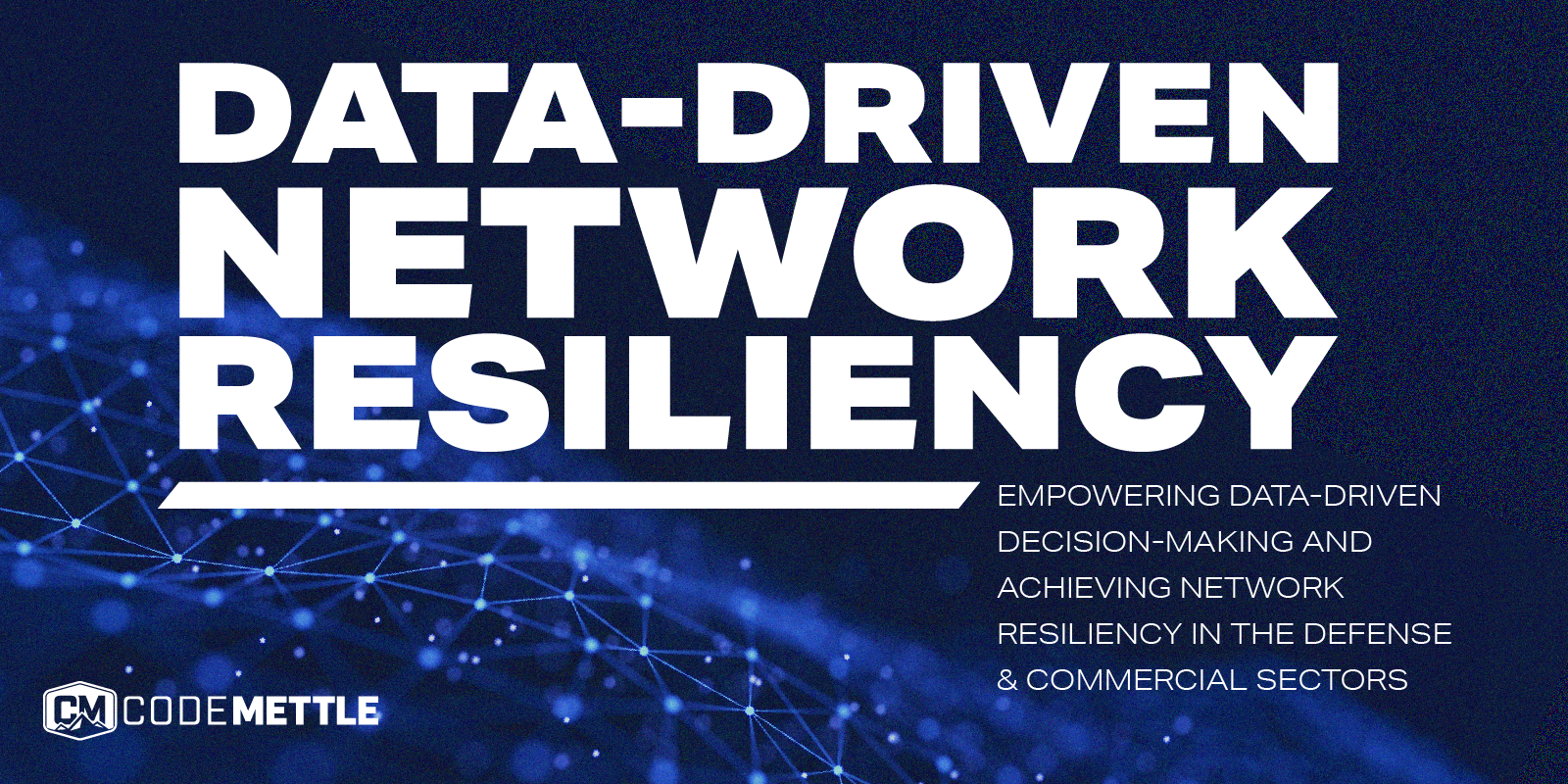Data Driven Network Resiliency Requires Data Fabrics Tailored to DIL Environments

- October 4, 2024
- Blog
Data-driven decisions are paramount in every military warfighting function, including Network Operations (NetOps). With the expansion of networks and their reach to the edge, it becomes crucial to empower decision-makers with the necessary data for informed decision-making. However, effectively gathering and utilizing NetOps data in the current network environment presents significant challenges, especially in Disconnected, Intermittent, and Limited (DIL) environments.
NetOps encounters complex hurdles in demanding operational environments, primarily due to the dispersed, inconsistent, and untimely nature of the available data. The decentralized storage of data across multiple geographically dispersed systems adds to the complexity of accessing and consolidating essential NetOps information for planning, management, and operations. Moreover, outdated or irrelevant data exacerbates these difficulties, resulting in suboptimal decision-making processes and diminished mission success rates.
Furthermore, the ever-changing battlefield presents further complexities that impede the effectiveness of NetOps. Interference, jamming, cybersecurity threats, and other disruptive elements present significant challenges in maintaining situational awareness, making informed decisions, and achieving mission success.
This exploration delves into the benefits and challenges of implementing a specialized data fabric for NetOps in DIL environments. A data fabric offers a unified and consistent view of NetOps data across the entire network, streamlining the need for multiple tools and extensive training. A DIL-tailored data fabric strengthens the network, enhances decision-making processes, and ultimately ensures mission success by addressing bandwidth limitations, disruptions, and adverse conditions.
Data fabrics in DIL environments must account for:
- Lazy data transfer: To ensure efficient data transfer in DIL environments, a data fabric should incorporate technical mechanisms such as asynchronous processing, delay management, scheduling, and buffering. These techniques optimize bandwidth usage, allowing for seamless and effective data management.
- Local Processing: Local processing enables networked nodes to conduct data analysis and decision-making autonomously. This reduces dependence on external resources and ensures uninterrupted operations, even without network connectivity.
- Cloud as Secondary Option: The primary role of the data fabric is to operate effectively in scenarios with limited network connectivity, allowing for local data storage and processing at networked nodes. However, when network connectivity is established, and bandwidth is sufficient, the fabric should seamlessly integrate with cloud resources, enhancing data processing and storage flexibility.
- Node Level Independence and Connectivity: Each networked node collects and processes data locally and has data collection mechanisms and processing capabilities. Data synchronization mechanisms enable node collaboration, ensuring data consistency when network connectivity and bandwidth are available.
- Bandwidth Control and Prioritization: The data fabric should offer customizable options and mechanisms for managing bandwidth allocation and reservation. By implementing traffic classification and prioritization, data transmissions can be organized based on their significance and urgency.
- Data Integration and Transformation: Data integration tools facilitate connectivity and extraction from various sources, while the Extract, Transform, Load (ETL) process automates the extraction, transformation, and loading of data.
- Continuous Monitoring and Optimization: Continuously tracking performance indicators, such as network latency and data transfer speed, with advanced tools, ensures optimal functionality. It aids issue detection, informs proactive decision-making, and enhances efficiency, reliability, and cost-effectiveness. Optimization efforts, including configuration adjustments and load balancing, prevent potential disruptions.
- Permissions and Trust: A resilient permission and trust framework facilitates decentralized control, data integrity, and security in a data fabric implementation tailored for DIL. This can be accomplished through advanced automation and even enable a zero-trust approach.
- Federated Data Fabrics: The implementation of federated data fabrics requires interconnected instances of data fabrics, where each entity independently manages its own instance. This autonomous management ensures seamless integration while maintaining control and autonomy at each level.
- Data Governance Framework: To ensure compliance with DoD Accreditation requirements, it is crucial to establish and enforce data policies and access controls. Additionally, it is essential to implement encryption mechanisms that adhere to NIST standards. These measures will effectively safeguard data at rest, during transit, and throughout processing.
Deploying a tailored data fabric for NetOps in DIL environments brings forth an array of advantages and tackles key hurdles encountered by defense and commercial sectors. As modern warfare and the commercial landscape become more data-centric, the need for effective data management systems becomes crucial to facilitate informed decision-making and operational efficiency.
Overcoming the challenges of limited bandwidth, intermittent connectivity, and decentralized data storage and management requires harnessing the power of a data fabric. By incorporating technical mechanisms like lazy data transfer, local processing, cloud integration, node-level independence, efficient bandwidth control, data integration and transformation, continuous monitoring and optimization, decentralized control, and robust data governance, the data fabric empowers NetOps operations in any networking environment. With a DIL-tailored data fabric, organizations can effectively address the obstacles posed by the nature of the environment, interference, and decentralized data management, ensuring seamless connectivity and efficient data handling.
A data fabric offers a unified and consistent perspective of NetOps data, reducing the need for multiple tools and training while boosting situational awareness and data-driven decision-making for organizations. It enables seamless access to distributed data sources, prioritizes critical data transmission, optimizes resource allocation, and ensures effective data integration and transformation. By employing continuous monitoring and optimization, the data fabric enhances performance, reliability, and adherence to governance policies.
Complete the form below to download the full Data Fabric White Paper.


